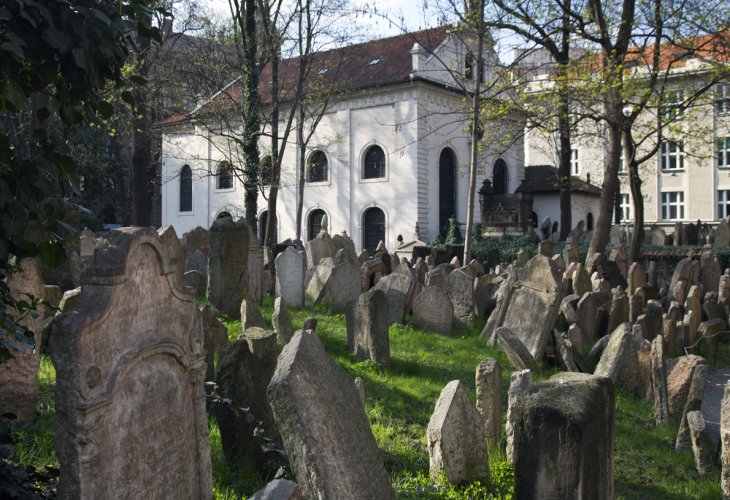Torah Personalities
Rabbi Avigdor Kara: The Scholar Who Rebuilt Jewish Prague After Tragedy
Who was Rabbi Avigdor Kara, and why is a replica of his gravestone at the Czech National Museum?
 (Photo illustration: shutterstock)
(Photo illustration: shutterstock)One of Europe’s most iconic Jewish landmarks is the Old Jewish Cemetery in Prague. At its center stands a humble yet historic gravestone belonging to Rabbi Avigdor ben Yitzchak Kara, the earliest recorded burial in the cemetery and one of the foundational figures of Jewish life in Prague.
From Regensburg to Prague: A Torah Scholar and Judge
Rabbi Avigdor was born in Regensburg in the 14th century, during a time when the heart of Jewish Torah scholarship in Europe was concentrated along the Rhine River valley. This region had produced Torah greats since the days of Rabbeinu Gershom, known as the “Light of the Exile.” In Regensburg, Rabbi Avigdor served as a dayan (rabbinical judge).
He eventually moved to Prague, where he became the head of the rabbinical court, serving alongside two major rabbinic leaders of the time, Rabbi Yom Tov Lipmann Mülhausen and Rabbi Menachem ben Yaakov Shalem. Together, they helped lay the foundation for Prague’s Jewish community, which was just beginning to coalesce.
In Prague, Rabbi Avigdor married the sister of Rabbi Levi HaZaken, the grandfather of the renowned Maharal of Prague.
Rebuilding a Community
Tragedy struck the Jewish community of Prague in the year 1389, when a brutal pogrom led by local non-Jews wiped out nearly the entire community. Rabbi Avigdor was among the few survivors. In the wake of the massacre, he took it upon himself to rebuild the community.
He reestablished Jewish life centered around the Altneu Shul (the “Old-New Synagogue"), which at the time was relatively new, at just over a century old. His leadership restored both the spiritual and social foundations of Prague’s Jewish population.
Rabbi Avigdor also composed a moving selicha (penitential prayer) titled Et Kol HaTala (“All the Affliction”), describing the horrors of the pogrom. This prayer became part of the Mincha (afternoon) service on Yom Kippur in Ashkenazic tradition.
A Voice of Influence and a Hidden Legacy
Rabbi Avigdor maintained a unique relationship with Wenceslaus IV, King of Bohemia. According to tradition, he even held religious influence over the king and persuaded him of the moral and theological strength of Judaism. Some speculate that Rabbi Avigdor’s teachings indirectly influenced Jan Hus, a university lecturer who preached against the Catholic Church and whose ideas sparked rebellion. Though Hus was ultimately burned at the stake, the movement that followed him, known as the Hussites, bore his name and legacy. Today, Prague is filled with memorials and statues dedicated to Hus and his role in Czech history.
Legend holds that Rabbi Avigdor anonymously authored several mystical works that later influenced great Kabbalists such as Rabbi Moshe Cordovero. While no hard evidence supports this claim, the story persists in Jewish lore.
A Lasting Legacy in Stone and Memory
Rabbi Avigdor’s gravestone remains a source of pride for the Czech people. A replica of his tombstone is on display in the National Museum of the Czech Republic, and the original stands at the heart of the Old Jewish Cemetery in Prague, a site visited daily by thousands from around the world.
His legacy is not just etched in stone but in the spiritual history of a community that rose from devastation through his leadership and faith.

